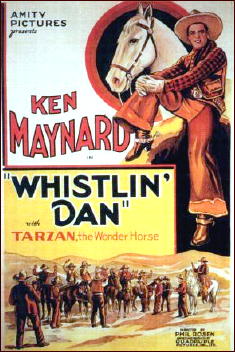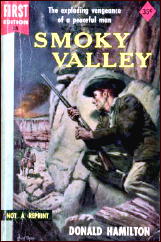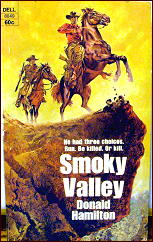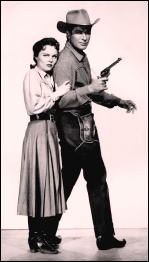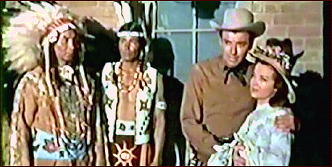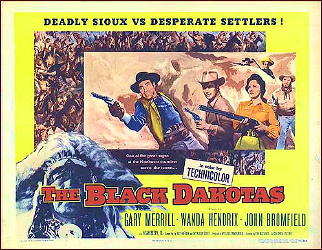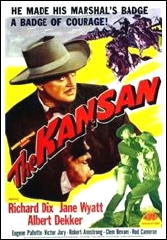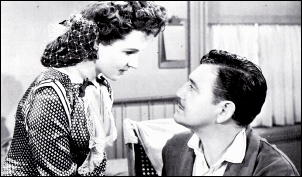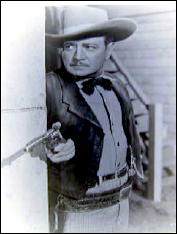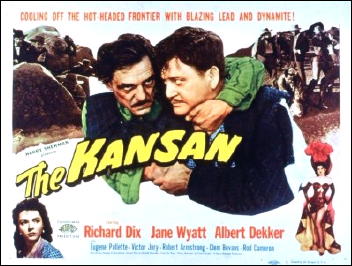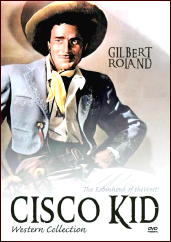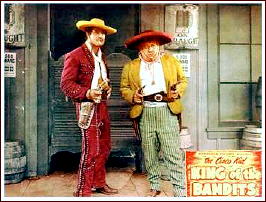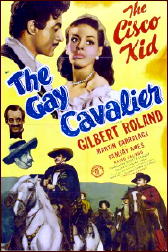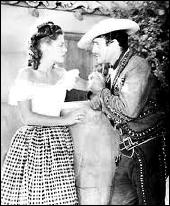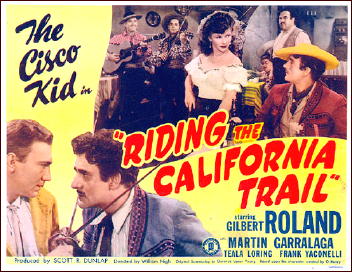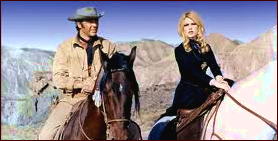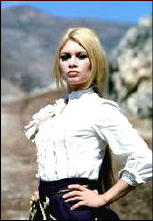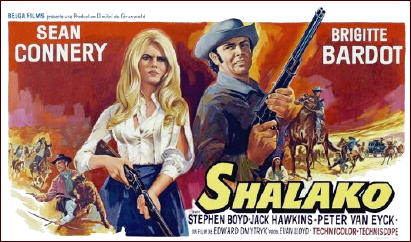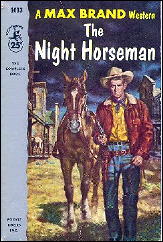Tue 15 Feb 2011
Western Movie Review: WHISTLIN’ DAN (1932).
Posted by Steve under Reviews , Western movies[4] Comments
WHISTLIN’ DAN. Tiffany Productions, 1932. Ken Maynard [as Whistlin’ Dan Savage], Joyzelle Joyner, Georges Renavent, Harlan Knight, Don Terry, Tarzan the Wonder Horse. Director: Phil Rosen.
As far as the story line goes, this is a pretty good example of an early 30s western. It overcomes the low budget I’m sure this movie must have had, and even so, I think the worn and washed out look of the buildings the action takes place in – and there’s quite a bit of action – is a lot closer to the buildings and saloons the cowboys of the Old West actually lived (and drank) in.
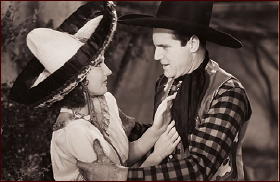
But to get back to the story, when one of Dan Savage’s range partners is kidnapped by south-of-the-border bandit leader Captain Serge Karloff (Georges Renavent) for $5000 they don’t have, and when Dan and his other partner, a grizzled old fellow named July (Harlan Knight) get to the rendezvous point too late, Dan and July decide to take the not-so-small matter of justice into their own hands.
Posing as crooks themselves, they work their way into Karloff’s gang, and with the help of Mexican saloon girl Carmelita (Joyzelle), they begin to destroy the gang from the inside out. As it turns out, Carmelita is also quite a dancer, with two lengthy barroom scenes with which to display her talents.
Whistlin’ Dan himself even whistles in a another scene, as he’s courting the lady, but otherwise, as was mentioned before, there’s enough action in the rest of the film to satisfy everyone who came to see this movie in 1932, and today too, for that matter.
But as for the man who plays the hero in Whistlin’ Dan, Ken Maynard, that’s something else I’ve been meaning to get around to, but I’ve put it off until now. Maynard was a chunky fellow in this movie, with narrow squinty eyes, and he does a good job playing a cowboy who may not be the brightest bulb on the plains. What Carmelita sees in him, I’m not sure. He doesn’t strike me as the romantic type, but in the early 30s being maybe good with horses and a gun was all a cowboy hero needed.
